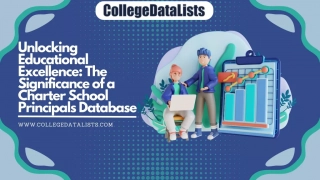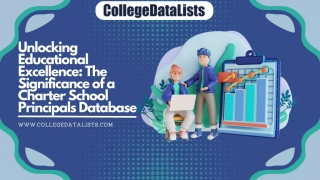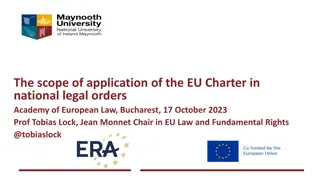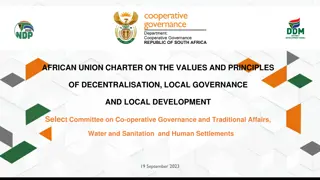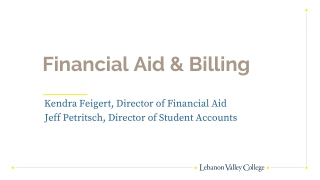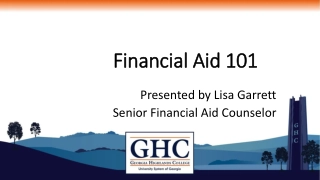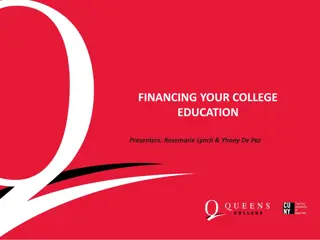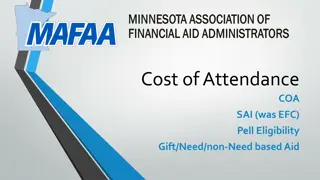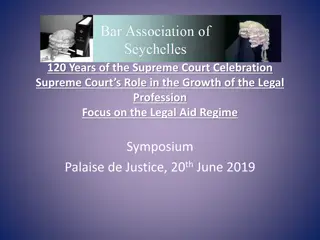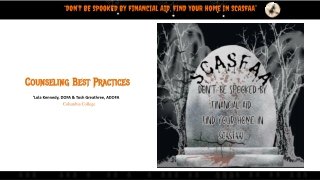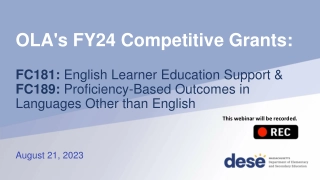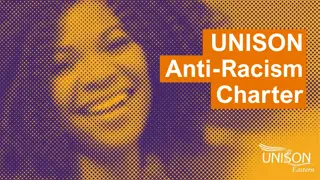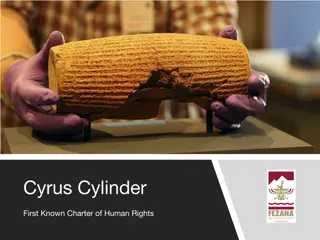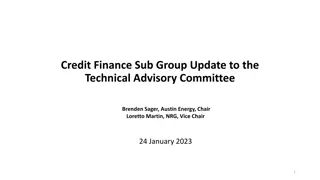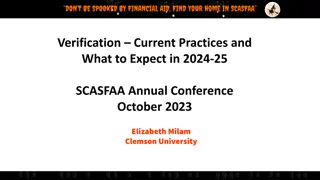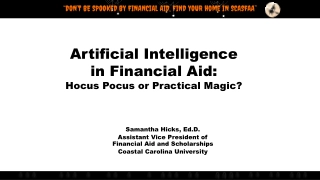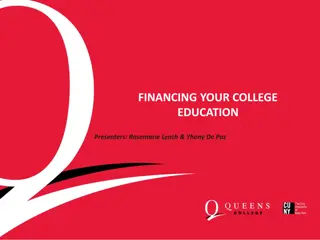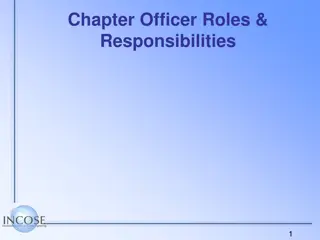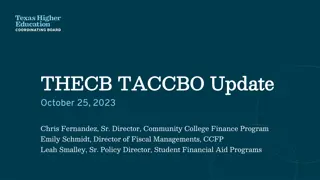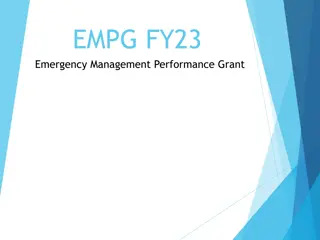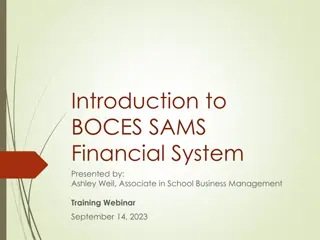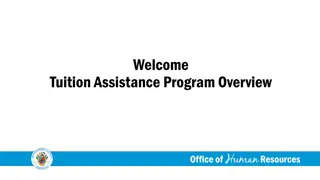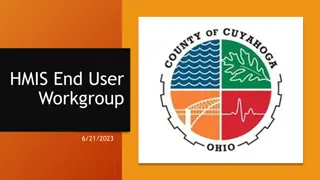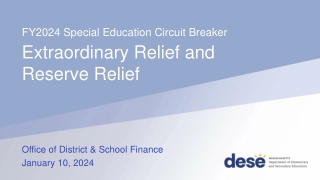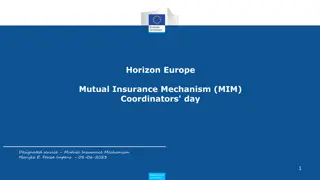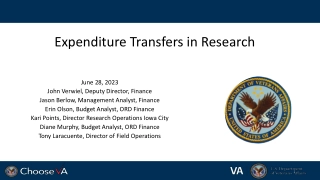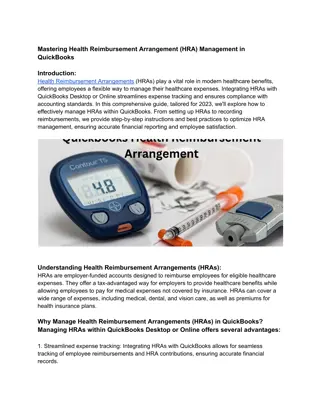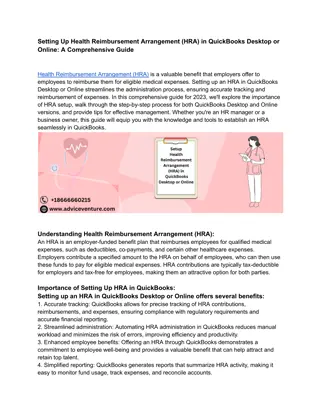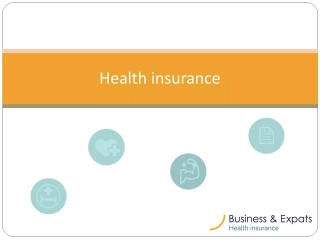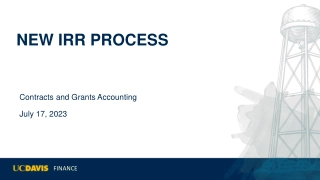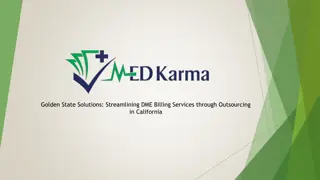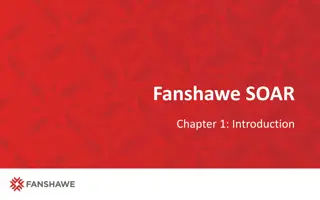FY24 Chapter 70 Aid and Charter Reimbursements Overview
FY24 Chapter 70 aid and charter reimbursements show a $594 million increase over FY23, focusing on new foundation budget rates in key areas like benefits, special education, and more. The Act also adjusts low-income enrollment criteria and increases in-district special education enrollment percentages. Additionally, all foundation budget categories are adjusted for inflation.
FY24 Chapter 70 Aid and Charter Reimbursements Overview
PowerPoint presentation about 'FY24 Chapter 70 Aid and Charter Reimbursements Overview'. This presentation describes the topic on FY24 Chapter 70 aid and charter reimbursements show a $594 million increase over FY23, focusing on new foundation budget rates in key areas like benefits, special education, and more. The Act also adjusts low-income enrollment criteria and increases in-district special education enrollment percentages. Additionally, all foundation budget categories are adjusted for inflation.. Download this presentation absolutely free.
Presentation Transcript
FY24 Chapter 70 aid and Charter reimbursements August 10, 2023 1
FY24 Chapter 70 continues implementation of the Student Opportunity Act (the Act) FY24 Chapter 70 is $6,592,623,086, a $594 million increase (9.9%) over FY23 The Act establishes new, higher foundation budget rates in 5 areas: Benefits and fixed charges Guidance and psychological services Special education out-of-district tuition English learners Low-income students FY24 Chapter 70 includes rate changes above inflation toward the goal rates in these 5 areas and closes an additional 1/6th of the gap FY24 is the third year of implementation of the Act 3
The low-income threshold at 185% of the federal poverty level in accordance with the Act The Act restores the definition of low-income enrollment used prior to FY17, based on 185% of the federal poverty level, up from the 133% threshold used for the economically disadvantaged match from FY17 to FY22 Statewide low-income enrollment for FY24 is 421,314, compared to 407,501 for FY23 Starting in FY23, the Department has designated a student enrolled on October 1st as low income if the student is: Identified as participating in state public assistance programs, including the Supplemental Nutrition Assistance Program, Transitional Aid to Families with Dependent Children, MassHealth, and foster care; or Verified as low income through a supplemental data collection process; or Reported as homeless through the McKinney-Vento Homeless Education Assistance program application 4
The Act also increases the assumed in-district special education enrollment percentages The Act increases the rate for vocational students from 4.75% to 5% and from 3.75% to 4% for non-vocational students Proposed rate increases for FY24 close an additional 1/6th of the gaps, so the factors used for FY24 are 4.90% and 3.90%, respectively 5
On top of the targeted rate increases, all foundation budget categories have been adjusted upward to account for inflation An employee benefits inflation rate is applied to the employee benefits and fixed charges category Based on the enrollment-weighted, three-year average premium increase for all GIC plans For FY24 the increase is 5.16% An inflation increase of 4.50% has been applied to all other foundation budget rates, based on the U.S. Department of Commerce s state and local government price deflator and capped at the 4.50% maximum set in the Act 6
The Act also adds a new minimum aid adjustment to the formula This provision provides hold harmless aid to operating districts that otherwise would have lost aid due to the new foundation budget factors Determines the aid that these districts would have received if foundation budget rates were only increased by inflation If this amount is higher than the revised formula amount, districts get the higher amount 7
The Act codified the aggregate wealth model for determining local contribution requirements For municipalities with required contributions above targets, the requirement is reduced by 100% of the gap Cities and towns with combined effort yields greater than 175% of foundation have required local contributions set at not less than 82.5% of foundation Due to rapid increases to foundation, many communities are below target and fewer are eligible for excess effort reductions 288 communities are subject to below effort increments to bring their contributions closer to target compared to 48 in FY21 (year prior to implementation of the Act) 25 communities are eligible for excess effort reduction compared to 201 in FY21 8
Tuition rates for Commonwealth charter schools are based on the same foundation budget rates used in Chapter 70 Foundation budget rate increases being implemented in FY24 have been incorporated into our projected FY24 tuition rates In addition, charter school low-income enrollment for FY24 has been identified using the same eligibility criteria used for districts (see slide 4) 10
FY24 budget implements the 3-year (100%/60%/40%) schedule for transition aid tied to year over year tuition growth Funding for first year reimbursements is prioritized over funding for second year reimbursements The reimbursement formula for transitional aid to districts reflects the change enacted by Section 38 of the FY20 budget, with an entitlement of 100% of any tuition increase in the first year, 60% in the second year, and 40% in the third year The Act requires that 100% of the total state obligation to be funded in FY24 and subsequent years FY24 budget allocates $232.6 million for these reimbursements This appropriation level is expected to meet the 100% requirement when tuition assessments are updated to reflect actual enrollments and district spending levels The facilities component of the tuition rate is $1,088 per pupil, with this cost fully reimbursed by the state as in prior years 11
Calculating Chapter 70 local contribution requirements and state aid 12 12
Goal of the Chapter 70 formula To ensure that every district has sufficient resources to meet its foundation budget spending level, through an equitable combination of local property taxes and state aid. 13
The updated formula includes three parameters to be specified in each year s general appropriations act For FY24, these are specified as: Total state target local contribution = 59% Effort reduction = 100% Minimum aid = $60 per pupil 14
There are 6 factors that work together to determine a districts Chapter 70 aid Foundation Budget Enrollment Wage Adjustment Factor Inflation Local Contribution Property value Income Municipal Revenue Growth Factor 15
There are three primary steps in determining each districts Chapter 70 aid Determine an equitable local contribution requirement, how much of the foundation budget that should be paid for by each city and town s property tax, based upon the relative wealth of the municipality Define and calculate a foundation budget for each district, given the specific grades, programs, and demographic characteristics of its students Calculate state aid, providing necessary funds to reach foundation or mandated minimum aid increases Required Local Contribution + State Aid = a district s net school spending (NSS) requirement This is the minimum amount that a district must spend to comply with state law 16
Each district's foundation budget is calculated by multiplying the number of pupils in 13 enrollment categories by cost rates in 11 functional areas Base Foundation Components 4 Incremental Costs Above the Base 10 English learners PK-5 FY24 Chapter 70 Foundation Budget 239 Plymouth 1 2 3 5 6 7 8 9 11 12 13 ------ Kindergarten ------ Junior/ Middle High School Special Ed In-District Special Ed Tuitioned-Out English learners 6-8 English learners High School/Voc Pre-school Half-Day Full-Day Elementary Vocational Low income TOTAL Foundation Enrollment 194 0 488 2,701 1,687 2,043 675 303 69 216 51 83 2,812 7,691 1 Administration 2 Instructional Leadership 3 Classroom & Specialist Teachers 4 Other Teaching Services 5 Professional Development Instructional Materials, Equipment & Technology* 7 Guidance & Psychological Services 8 Pupil Services 9 Operations & Maintenance 10 Employee Benefits/Fixed Charges* 11 Special Education Tuition* 44,572 80,496 369,111 94,665 14,597 0 0 0 0 0 224,232 404,987 1,856,970 476,278 73,479 1,241,086 2,241,537 10,277,885 2,636,121 406,752 775,162 1,400,027 5,649,103 1,185,219 275,379 938,741 1,695,468 10,060,521 1,194,892 323,375 310,157 560,177 5,650,777 394,788 176,641 960,894 252,935 24,138 42,241 295,672 42,241 12,067 6,041 10,571 73,997 10,571 3,020 9,873 17,278 120,945 10,085,582 47,611,266 17,278 4,936 489,288 218,068 1,033,129 5,005,899 7,485,911 0 0 0 3,170,704 2,960,442 152,951 3,864 0 9,016,359 1,932,486 0 6 51,466 34,918 10,681 102,498 141,356 0 0 0 0 0 0 258,938 175,680 53,760 515,657 711,143 1,433,178 972,358 446,255 2,854,075 3,936,113 895,139 684,647 455,305 1,932,556 2,604,812 1,734,425 943,915 1,271,469 2,269,248 2,812,455 1,002,827 311,866 420,089 1,403,199 1,238,558 128,614 0 0 0 0 0 29,065 18,103 6,036 72,410 65,226 7,274 4,531 1,510 18,122 16,324 11,889 7,405 2,468 29,619 26,680 72,268 408,406 2,122,154 5,625,084 3,561,829 4,789,726 0 10,270,745 0 0 1,073,361 1,181,209 1,603,121 14,336,997 0 0 0 0 0 0 0 0 2,313,565 0 0 0 2,313,565 12 Total 944,361 0 4,751,123 26,445,359 15,857,349 23,244,510 11,469,078 9,628,175 2,570,364 607,198 151,962 248,371 16,032,016 111,949,867 13 Wage Adjustment Factor 103.8% Foundation Budget per Pupil 14,556 *The wage adjustment factor is applied to underlying rates in all functions except instructional equipment, benefits and special education tuition. 14 Low-income percentage 37.57% 15 Low-income group 7 0.9% English learner foundation budget as % total foundation budget Low-income foundation budget as % total foundation budget 14.3% All students are counted in categories 1 7; special education, English learner, and low-income costs are treated as costs above the base and are captured in 8 13 17
Foundation budgets vary based on student needs, including concentrations of low-income students Foundationbudget per pupil, by low-income % range 0.00 - 5.99% $11,754 6.00 - 11.99% $12,435 12.00 - 17.99% $12,666 18.00 - 23.99% $12,695 24.00 - 29.99% $13,006 30.00 - 35.99% $13,385 36.00 - 41.99% $13,901 42.00 - 47.99% $14,967 48.00 - 53.99% $15,154 54.00 - 69.99% $16,271 70.00 - 79.99% $18,188 80.00%+ $18,685 State average $15,229 Note: Chart excludes vocational and agricultural districts. 18
Determining each municipalitys target local share starts with the local share of statewide foundation Statewide, determine percentages that yield from property and from income Calculate statewide foundation budget Determine target local share of statewide foundation 41% State aid $5.725B Statewide foundation budget $13.963B Income effort 1.5331% $4.119B 59% Local contribution $8.238B Property effort 0.3534% $4.119B Property and income percentages are applied uniformly across all cities and towns to determine the combined effort yield from property and income. 19
An individual municipalitys target local share is based on its local property value, income, and foundation budget The sum of a municipality s local property and income effort equals its Combined Effort Yield (CEY) CE Y 2020 aggregate income X Statewide Income % 1.5331% 2022 EQV X Statewide Property 0.3534% Target Local Share = CEY/Foundation budget (calculated at the city/town level) Capped at 82.5% of foundation (166 municipalities or 47% are capped) 20
Next the formula calculates each municipalitys preliminary local contribution (PLC) and makes adjustments relative to target to determine the required local contribution (RLC) Preliminary contribution Required contribution If the PLC as a % of foundation > target Reduce PLC by 100% of the gap Increase last year s required local contribution by the MRGF If the difference is < than 2.5%, the PLC is the new requirement If the difference is between 2.5% and 7.5%, add 1% to PLC If the PLC as a % of foundation< target Municipal Revenue Growth Factors (MRGF) are calculated annually by the Department of Revenue. MRGFs quantify the most recent annual % change in each municipality s local revenues, such as the annual increase in the Proposition 2 levy limit, that should be available for schools If the difference is > 7.5%, add 2% to PLC 21
Once a city or towns required local contribution is calculated, it is allocated among the districts to which it belongs Town of Orleans Foundation budget = $6.02M Required local contribution= $4.97M Cape Cod Regional Voc Tech 5% Cape Cod Regional Voc Tech 5% Nauset (6- 12) 60% Nauset (6- 12) 60% Orleans (K- 5) Orleans (K-5) 35% 22
Foundation aid provides additional funding for districts to spend at their foundation budgets Foundation budget Required local contribution = Foundation aid Start with prior year s aid Add together the prior year s aid and the required local contribution If this year s foundation aid exceeds last year s total Chapter 70 aid, the district receives the amount needed to ensure it meets its foundation budget (3) Foundation aid increase Prior year s aid (1) Foundation budget (2) This year s required local contribution 23
Calculating Chapter 70 aid: Districts are held harmless to previous aid levels and guaranteed at least a $60 per pupil increase 674 Gill Montague Aid Calculation FY24 Districts are held harmless to the previous year s level of aid 124 districts receive minimum aid increases of $60 per pupil in FY24 Prior Year Aid 1 Chapter 70 FY23 $7,778,051 Foundation Aid 2 Foundation budget FY24 3 Required district contribution FY24 4 Foundation aid (2 -3) 5 Increase over FY23 (4 - 1) $14,525,789 $6,845,441 $7,680,348 $0 Minimum Aid 6 Minimum $60 per pupil increase 7 Minimum aid amount (if line 6 - line 5 > 0, then line 6 - line 5, otherwise 0) $56,820 $56,820 Subtotal 8 Sum of 1,5,7 $7,834,871 Minimum Aid Adjustment 9 Minimum aid adjustment 10 Aid adjustment increment (if line 9 - line 8 > 0, then line 9 - line 8, otherwise 0) $7,806,461 $0 Non-Operating District Reduction to Foundation 11 Reduction to foundation 0 24 FY24 Chapter 70 Aid $7,834,871
Districts receive different levels of Chapter 70 aid because their municipality s ability to pay differs 100% 90% 80% 70% 60% State Aid % Net School Spending Requirement 50% Required Local Contribution 40% 30% 20% 10% 0% Required Local Contribution + State Aid = a district s net school spending (NSS) requirement 25
The aggregate wealth model has eliminated required excess effort, but in recent years effort shortfalls have increased For communities that are below target, recent expansions in foundation budgets have resulted in required local contributions not keeping pace with the foundation budget increases 26
There are no longer any districts funded below target, while above target aid has increased 27
QUESTIONS? Rob O Donnell, Director of School Finance Rob Hanna, State Aid Programs Manager Robert.F.O Donnell@mass.gov Robert.Hanna@mass.gov 781.338.6512 781.338.6525


